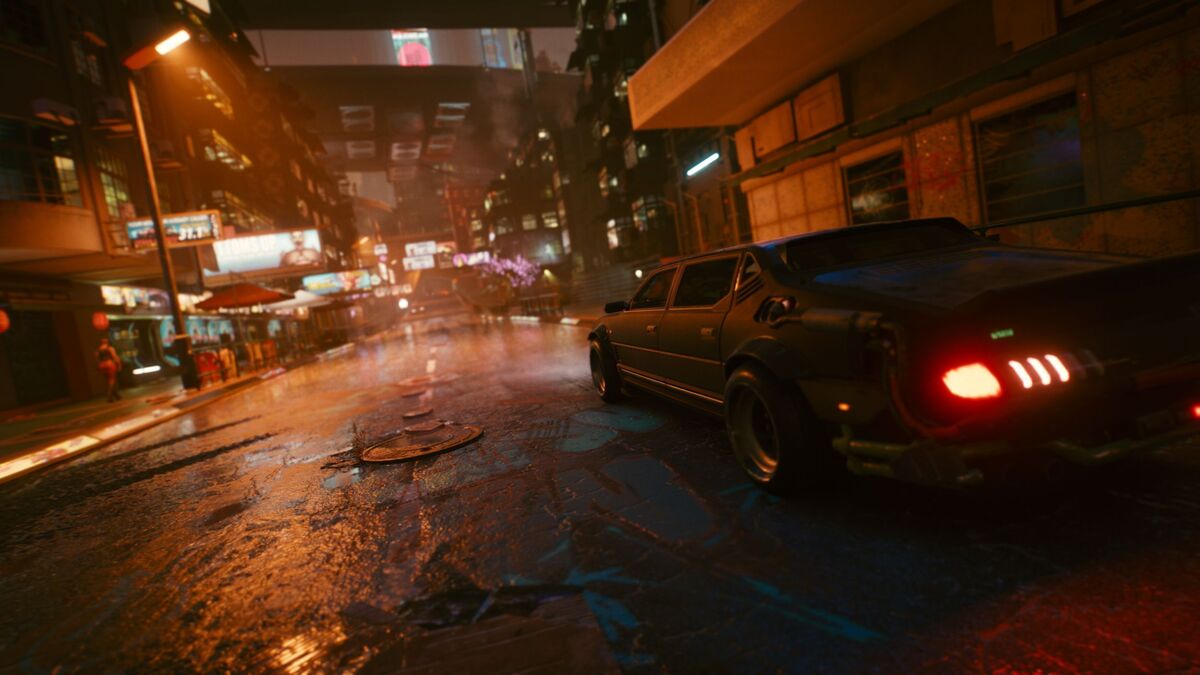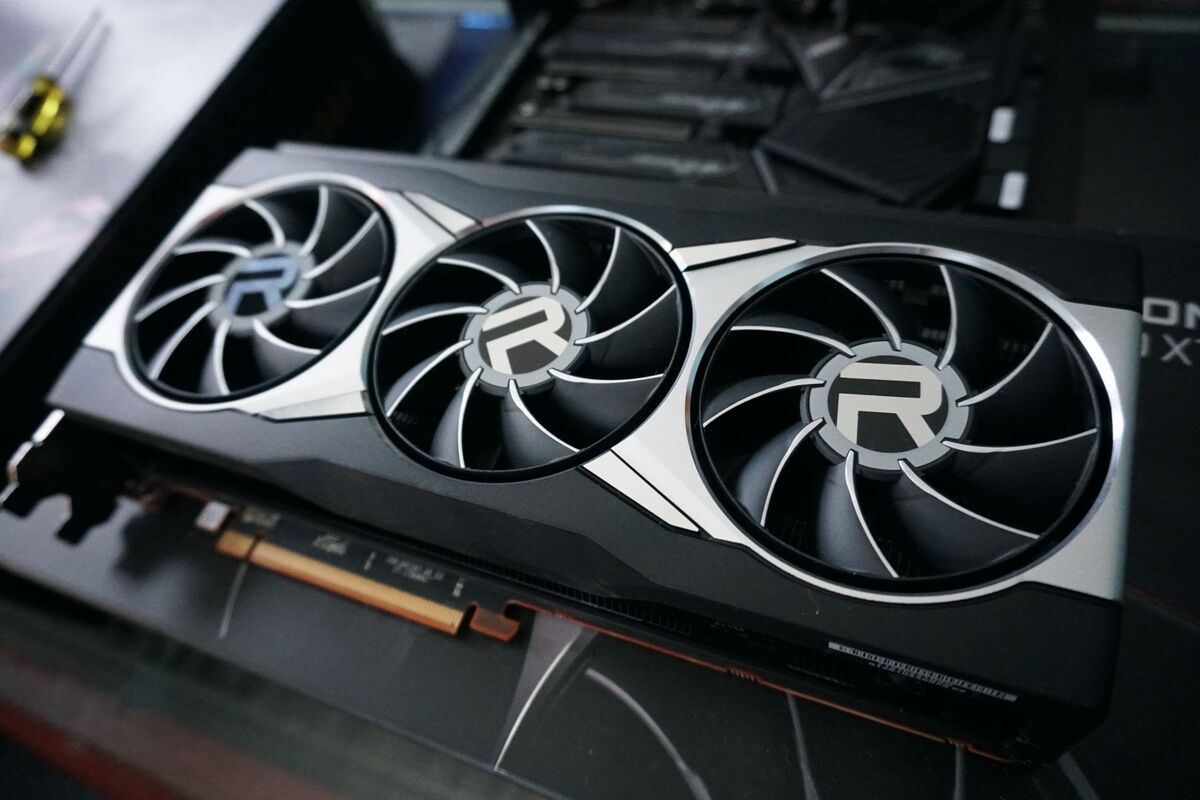RTX off

Brad Chacos/IDG
Today’s Best Tech Deals
Picked by PCWorld’s Editors
Top Deals On Great Products
Picked by Techconnect’s Editors
Good news! This week, a Cyberpunk 2077 patch added ray tracing support for AMD’s Radeon RX 6000-series graphics cards, loosening Nvidia’s (worryingly) exclusive grip on the cutting-edge lighting features. But that came with a bit of bad news too, as Cyberpunk 2077 drove home that AMD’s missing DLSS rival, dubbed FidelityFX Super Resolution, can’t come soon enough.
AMD introduced real-time ray tracing support in the Radeon RX 6000-series GPUs, after Nvidia’s GeForce RTX 20-series graphics card brought the technology to PCs in 2018. Nvidia didn’t just focus on ray tracing, however; it also rolled out a complementary Deep Learning Super Sampling (DLSS) feature. DLSS leverages machine learning and dedicated AI cores in RTX graphics cards to render games at a lower resolution internally, then upscale the final image to your chosen resolution. That helps GeForce cards negate the terrifying performance impact that occurs when you flip on ray tracing.
 Brad Chacos/IDG
Brad Chacos/IDGThe Radeon RX 6900 XT is ferocious…in everything but Cyberpunk 2077.
Without a feature like DLSS, ray tracing can send performance plummeting to unplayable levels even on the beefiest graphics cards. AMD’s Cyberpunk 2077 performance proves that out. All of the Radeon GPUs released this generation cost a lot and target higher resolutions. The Radeon RX 6700 XT is built for 1440p gaming, while the Radeon RX 6800-series and monstrous $1,000 Radeon RX 6900 XT target 4K resolution. For traditionally rasterized games—including Cyberpunk—these GPUs kick ass and take names.
Cyberpunk 2077’s ray tracing drives AMD’s graphics cards to their knees even at lowly 1080p resolution, though. GameStar’s benchmarks show the Radeon RX 6700 XT struggling to hold 30 frames per second with ray tracing set to Ultra and even Medium quality settings. The 6800 XT does a bit better, hitting 35 fps at RT Ultra and 45 fps at RT Medium. That’s still pitiful for a $750-plus offering. GameStar notes that comparable GeForce cards are 66 percent to 100 percent faster with RT enabled. Meanwhile, PCGamer showed that the beastly Radeon RX 6900 XT isn’t capable of playing Cyberpunk 2077 at even 1440p resolution with ray tracing on.
Oof.
To be fair, AMD has been up-front about the fact that its cards currently only handle ray tracing at 1080p, and Cyberpunk 2077’s luscious open-world eye candy earned a reputation for making GPUs sweat. It’s still a staggeringly poor showing for such staggeringly expensive graphics cards.
Worse, the AMD Dynamic FidelityFX CAS feature that CD Projekt integrated into Cyberpunk (and we recommended to help the game’s performance on any GPU) is flat-out broken with ray tracing enabled on Radeon cards. The video above from WCCFTech’s Keith May—a hoopy frood and repeat guest on PCWorld’s The Full Nerd podcast—shows environments blinking in and out of existence with the feature turned on. Alas.
Most games aren’t as crushing as Cyberpunk, a true ray tracing showcase, but the 1080p limitation holds true on Radeon graphics cards regardless. DLSS lets Nvidia cards game at 1440p, 4K, or even ludicrous 8K resolution with ray tracing on (though that last is awfully rare). It’s an ace in the hole for Nvidia right now.
AMD’s solution is coming. The company has been teasing FidelityFX Super Resolution since the Radeon RX 6000-series debut last fall, claiming the open solution will also work on AMD-powered consoles and thus be more appealing to developers. But it might not be coming soon. Radeon chief Scott Herkelman recently appeared on The Full Nerd podcast and promised that FSR will launch before the end of the year (along with dropping a cryptic teaser that AMD’s DLSS rival doesn’t need machine learning to work).
 AMD
AMDSee the “Super Resolution” in the corner?
“It’s probably one of the biggest software initiatives we have internally because we know how important it is that if you want to turn on ray tracing, that you don’t just want to have that competitive hit, or your GPU get hit so hard,” Herkelman said. “FidelityFX Super Resolution is something key to us to launch this year, but it’s going to take a little bit more time. We are progressing well, but we still have some work to do.”
It can’t come soon enough. The vast majority of today’s games aren’t ray traced, and AMD’s ferocious Radeon RX 6000-series cards go toe-to-toe with Nvidia’s best in traditional titles. Once you flip on ray tracing, though, GeForce GPUs put a bruising on AMD. Fortunately, Cyberpunk 2077 looks drop-dead gorgeous even with ray tracing turned off.
Note: When you purchase something after clicking links in our articles, we may earn a small commission. Read our affiliate link policy for more details.
Senior editor Brad Chacos covers gaming and graphics for PCWorld, and runs the morning news desk for PCWorld, Macworld, Greenbot, and TechHive. He tweets too.

